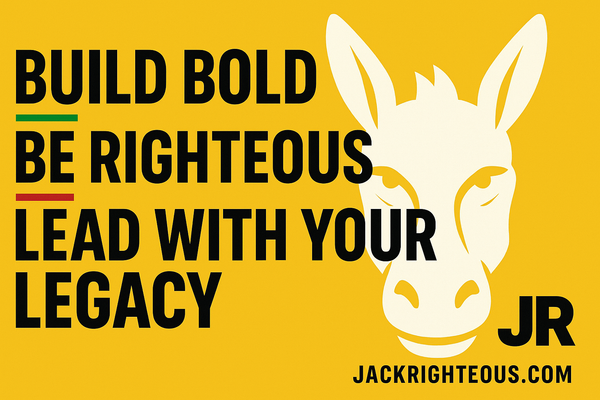Leonardo AI Master User Guide: From Prompt to Cinematic Production
Leonardo AI Master User Guide | Create Cinematic Visuals & Motion Content
SECTION 1:
Understanding Leonardo AI — A Professional Tool for Creative Visual Generation
Leonardo AI is a creator-first visual generation platform optimized for precision, style fidelity, and project-ready asset control. It combines text-to-image generation, real-time sketch prompting, and video animation (motion) — making it ideal for artists, storytellers, marketers, and brand builders seeking cinematic or stylized results.
Originally launched to support concept artists and illustrators, Leonardo AI now powers workflows in:
- Motion video and social content
- Game and metaverse asset design
- Music visualizers and cover art
- Brand and merchandise design
- Rapid prototyping and storyboarding
In 2024, Leonardo AI was acquired by Canva, expanding access and integration with one of the world's top content design platforms. This signals a commitment to professional-grade outputs while simplifying the UI for creators of all experience levels.
Leonardo AI offers a free tier (daily generation limits) and Pro subscriptions that unlock speed boosts, private outputs, model training (LoRA), and full commercial usage.
Who Should Use This Tool?
Leonardo AI is purpose-built for:
- Visual Storytellers — creating scenes, symbols, and emotional design for reels, blogs, or trailers
- Music Artists — generating motion visuals, posters, cover art, and branded loops
- Brand Builders — crafting consistent theme-driven visuals across campaigns and products
- Game Developers — producing environments, props, and layered concept sketches
- Content Creators — designing Pinterest pins, YouTube thumbnails, digital merch, or shortform hooks
Whether you’re launching a visual-first brand or adding visual power to your AI stack, Leonardo AI bridges concept and execution.
What Makes Leonardo AI Unique?
| Capability | Leonardo AI | Midjourney | DALL·E | Runway |
|---|---|---|---|---|
| Modular Prompts | ✅ Blend tags + freestyle | ❌ | ❌ | ✅ Partial |
| Realtime Sketch Canvas | ✅ Draw + text | ❌ | ❌ | ❌ |
| Video Animation (Motion Tool) | ✅ Native | ❌ | ❌ | ✅ |
| Style Templates (Elements) | ✅ Curated and editable | ❌ | ❌ | ✅ Partial |
| Project Foldering | ✅ Full tagging + folders | ❌ | ❌ | ✅ Limited |
| LoRA Support (Custom Style) | ✅ Trainable | ❌ | ❌ | ✅ (Basic) |
| Transparent Backgrounds | ✅ Export PNGs | ❌ | ❌ | ✅ |
Leonardo AI Core Tools & Workspaces
Once logged into LEONARDO AI you can access:
-
Create Tab (Text-to-Image)
Enter prompts with optional style tags, elements, and generation settings. Ideal for still frames, image sets, and visual experiments. -
Flow State Mode
Generates horizontal strips of related images. Limited to one tag per category but great for fast exploration. -
Realtime Canvas
Draw shapes or characters, then pair with prompts. Adjust prompt influence and sketch strength. Perfect for pre-vis, stylized illustrations, or UI/UX frames. -
Motion Tool
Animate an image with gentle panning, zooming, or atmospheric motion. Choose direction, strength (1–10), frame count, and export format (MP4). -
Elements Library
Preset stylistic bundles (e.g. “Mystical Glow,” “Grunge Concept Art,” “Spiritual Dreamscape”). Ensure consistent visual tone across scenes or assets. -
Project Library
Browse and rename generations, organize by folder, download batches, or re-enter prompts. (Note: Images inside Leonardo folders currently cannot be renamed directly — rename post-download.) -
Background Remover / Transparent Export
Enable transparent PNG exports for sticker packs, apparel mockups, or clean UI layers.
Recent Press + Product Milestones
-
Canva Acquisition (July 2024) – Leonardo AI joins Canva’s product suite, streamlining brand storytelling through visuals.
- Leonardo for Teams (Q3 2024) – Team folders, permission settings, and collaborative real-time image generation
-
Ethical Visual AI Framework (Oct 2024) – Partnered with University of Technology Sydney to develop safety standards for generative visuals.
-
2025 Roadmap includes:
- Advanced prompt token weighting
- Auto-tagged visual generation logs
- LoRA Trainer UI for public use
- Canva-style smart templates using Leonardo imagery
First-Time Setup Checklist
-
Create Your Leonardo AI Account
Visit LEONARDO AI and sign up with your email or Google account. -
Familiarize with the Workspace
Use the tabs: Create, Canvas, Motion, History, Library -
Test a Prompt in Create Tab
Example: -
“Spiritual prophet walking through golden desert, ember haze lighting, cinematic depth, concept art, dramatic shadow”
-
Try Flow State Mode
Use the same prompt to explore image variations. -
Animate With Motion Tool
Choose 72 frames, subtle movement (scale 5–6), and export. -
Save Visuals to Local Folders
Example format:
projectname_scene01_v1.jpgprojectname_motion01.mp4
Beginner Pro Tips
-
Prompt Like a Director: Subject + Action + Setting + Tone + Tags
-
“Prophet running through storm toward glowing temple, foggy mood, low angle, chiaroscuro lighting”
-
-
Use Aspect Ratios Intentionally:
- 16:9 = cinematic / widescreen (YouTube, trailers)
- 9:16 = TikTok / Reels / Pinterest
-
Maintain a Prompt Log:
Track top-performing visuals in a Google Sheet, Notion, or Airtable doc. -
Use Consistent Elements:
For brand visuals or narrative cohesion, reuse style bundles. -
Export as Transparent PNGs:
Great for layering in merch, marketing, or UI designs.
Final CTA: Build Visual Systems That Convert
Start building with purpose — not just playing with AI.
- ✅ Get the Free Visual Starter Kit
- ✅ Book 1-on-1 Visual Coaching
- ✅ Submit to the Creator Spotlight
- ✅ Join the AI Visual Creators Lab
This is your system. Make it work.
